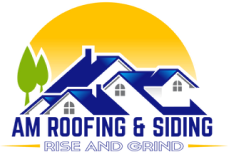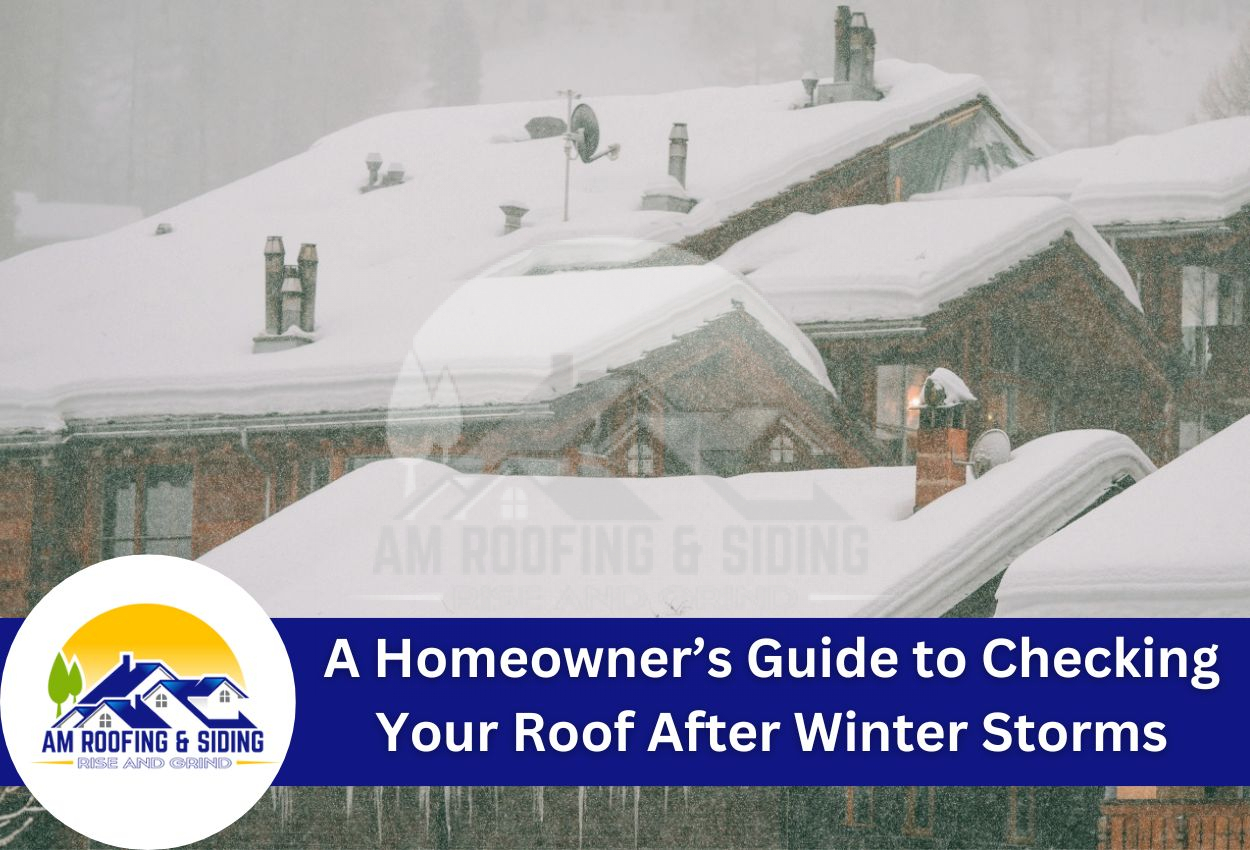Winter storms can take a toll on your home, especially your roof. As a homeowner in Central Ohio, it’s crucial to know how to check your roof for winter storm damage. Regular inspections can help you detect issues early, preventing expensive repairs and ensuring your home stays safe and dry. This guide will walk you through the importance of post-storm roof inspections and essential safety precautions to take before you begin your assessment.
Understanding how to check for roof damage after winter storms is a vital part of maintaining your home’s integrity. From identifying potential roof leaks to assessing shingle damage, we’ll cover the key areas you need to examine. You’ll learn about ice dam inspection, gutter maintenance after storms, and how to perform an attic moisture check. By following these steps, you’ll be better equipped to protect your home and identify when it’s time to call in a professional roofing contractor.
Before we dive into the specifics of a roof inspection, it’s important to emphasize safety. Checking your roof can be dangerous, especially after a winter storm when surfaces may be slippery or unstable. For the safest inspection, contact a professional who has experience working on, and assessing roofs.
Essential Tools for a DIY Roof Inspection
To perform a thorough roof inspection after winter storms, you’ll need to gather the right equipment. A sturdy ladder is essential for safely accessing your roof. Make sure it’s tall enough to extend at least three feet above the roof’s edge. You’ll also need a flashlight to examine dark corners and crevices, and a pair of binoculars for inspecting areas from the ground. Don’t forget protective gear like non-slip shoes, gloves, and safety glasses.
For a more detailed examination, consider using a moisture meter to detect hidden water damage. A digital camera or smartphone can help document any issues you find, which can be useful when consulting with a roofing professional. If you’re comfortable using technology, a drone equipped with a high-resolution camera can provide a comprehensive view of your roof without the need to climb up.
When checking for roof leaks, ice dam formation, or shingle damage, these tools will prove invaluable. They’ll help you spot potential problems like loose or missing shingles, damaged flashing, or clogged gutters. Remember, while DIY inspections are helpful, they don’t replace professional assessments. If you’re unsure about anything you see, or if you spot significant damage, it’s best to contact a reputable roofing contractor in Central Ohio for a thorough evaluation.
Exterior Signs of Winter Storm Damage
When assessing your roof for winter storm damage, it’s crucial to start with a ground-level inspection. Look for obvious signs of distress, such as missing or displaced shingles, which may be scattered around your yard. Check your gutters and downspouts for loose or detached sections, as these signs indicate damage from heavy snow or ice. Pay attention to any visible sagging in the roofline, which could suggest structural damage from excessive weight as well.
Once you’ve viewed the roof from the ground level, you’ll want to focus on the roof’s surface itself. Use binoculars to spot potential problems without climbing onto the roof. Look for cracked, curled, or blistered shingles, which are common after severe weather. Ice dams along the eaves are a telltale sign of heat loss and poor insulation. These can lead to water backing up under shingles and causing leaks. Also, check for any exposed underlayment or bare spots where granules have washed away, leaving shingles vulnerable to further damage.
If you notice any of these issues, it’s time to consider calling a professional roofing contractor. In Central Ohio, where winter storms can be particularly harsh, early detection and repair of roof damage are essential to prevent more serious problems down the line. Remember, a thorough inspection by an experienced roofer can reveal hidden damage that might not be visible from the ground.
Investigating Ice Dam Formation and Its Impact
Ice dams are a common winter roofing problem in Central Ohio, and understanding how they form is crucial for homeowners. The ridges of ice that form at the edge of a roof can cause significant damage if it’s left unchecked. To recognize ice dam indicators, look for icicles hanging from your eaves or gutters. While they may seem harmless, they often signal the presence of ice dams above.
The consequences of ice dams can be severe. As water backs up behind these ice formations, it can seep under shingles and into your home, leading to water damage in walls, ceilings, and insulation. This moisture can also promote mold growth, compromising your indoor air quality. Regular roof leak detection is essential to catch these issues early.
Assessing gutter conditions is another critical step in preventing ice dams. Clogged or damaged gutters can’t efficiently channel water away from your roof, increasing the risk of ice dam formation. After winter storms, perform a thorough gutter maintenance check. Look for signs of sagging, detachment from the fascia, or ice buildup within the gutters themselves. Ensuring proper drainage can significantly reduce the likelihood of ice dam-related damage to your roof and home.
Evaluating Shingle Strength After Harsh Weather
After a severe winter storm, you need to assess the condition of your roof’s shingles. Harsh weather can take a toll on these protective layers, potentially compromising your roof’s ability to shield your home from the elements. As a homeowner in Central Ohio, knowing how to check for shingle damage is an essential skill for maintaining your property.
Start by looking for loose, missing, or damaged shingles. These issues are often visible from the ground, but a closer inspection may be necessary for a thorough assessment. Look for shingles that appear curled, cracked, or completely torn off. Pay special attention to the roof’s edges and valleys, as these areas are particularly vulnerable to wind and water damage.
Another important part of evaluating shingles is examining granule loss. Granules are the sandpaper-like coating on shingles that protects them from UV rays and enhances their durability. After a storm, check your gutters and downspouts for an accumulation of these granules. Excessive granule loss can indicate that your shingles are nearing the end of their lifespan or have been damaged by hail or debris. If you notice significant granule loss, it may be time to consult a professional roofing contractor to discuss repair or replacement options.
Indoor Clues of Roof Damage
While exterior inspections are crucial, indoor signs can also reveal roof damage after winter storms. These internal signs are often the first hints of a problem, especially in cases where external damage isn’t immediately visible. As a homeowner in Central Ohio, knowing how to spot these indoor clues can help you address roof issues before they escalate into major problems.
One of the most important steps in identifying indoor roof damage is checking your attic for moisture and issues with insulation. After a winter storm, inspect your attic space for signs of water infiltration. Look for damp or discolored insulation, which can indicate a roof leak. Pay attention to any musty odors, as these can suggest ongoing moisture problems. Also, check for daylight coming through the roof boards, as this could signal holes or gaps in your roofing structure.
Another key aspect of indoor roof damage detection is identifying ceiling stains and other interior warning signs. Water stains on ceilings or walls, especially on upper floors, are often indicators of roof leaks. These stains may appear as yellow or brown discoloration and can expand over time if the leak isn’t addressed. Additionally, keep an eye out for peeling paint, bubbling wallpaper, or sagging drywall, as these can all be signs of water damage from a compromised roof. If you notice any of these symptoms, it’s crucial to contact a professional roofing contractor promptly to assess and repair the damage.
The Importance of a Professional Roofing Contractor
While DIY roof inspections are valuable, certain situations require expert intervention. Recognizing these scenarios is crucial for maintaining your roof’s integrity and your home’s safety. If you spot extensive shingle damage, multiple leaks, or significant structural issues, it’s time to call a professional roofing contractor in Central Ohio. Additionally, if you’re uncomfortable with heights or lack the necessary tools, it’s best to leave the inspection to the experts.
Preparing for a professional roof inspection is an important step. Before the contractor arrives, document any issues you’ve noticed, including water stains, unusual noises, or visible exterior damage. Clear the area around your home to provide easy access to the roof. If possible, review your roof’s history, including its age and any previous repairs. This information can help the inspector provide a more accurate assessment.
Professional roofers have the expertise to perform thorough inspections, including attic moisture checks and ice dam assessments. They can identify hidden problems that might be missed in a DIY inspection and provide expert advice on necessary repairs or replacements. By calling a professional when needed, you ensure your roof receives the care it requires to withstand Central Ohio’s challenging winter weather.
Contact The Pros At AM Roofing & Siding When You Need A Professional
If your post-winter storm inspection reveals significant damage, or if you’re unsure about the durability of your roof, it’s crucial to call a professional. AM Roofing & Siding specializes in diagnosing and repairing roofs impacted by harsh weather conditions. Delaying professional assessment can lead to more severe issues, including structural damage and costly repairs.
Ensure the safety and longevity of your home by contacting the experts at AM Roofing & Siding. Don’t wait until it’s too late — call us today at (740) 974-8268 and let us help you secure your home against the elements.

